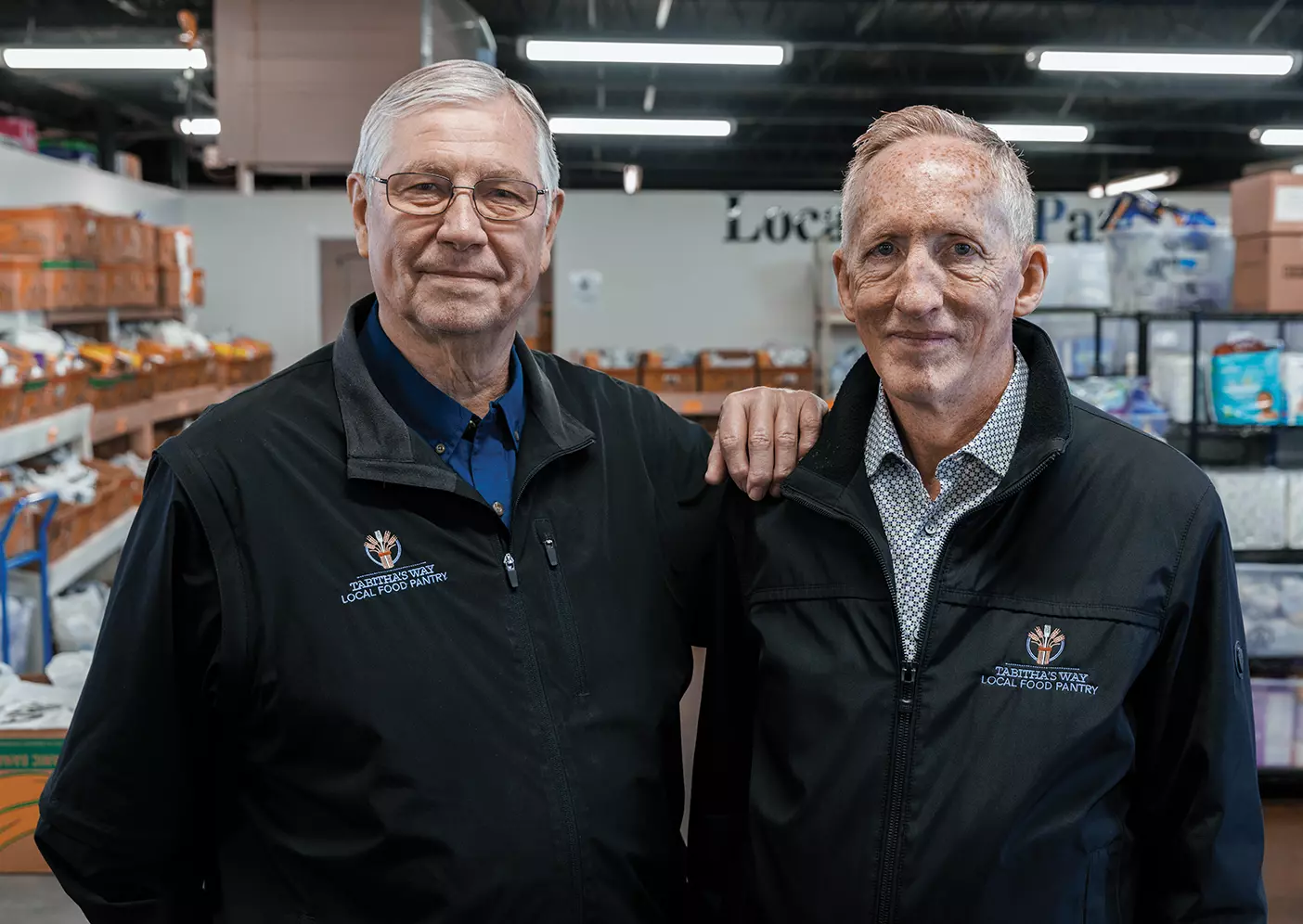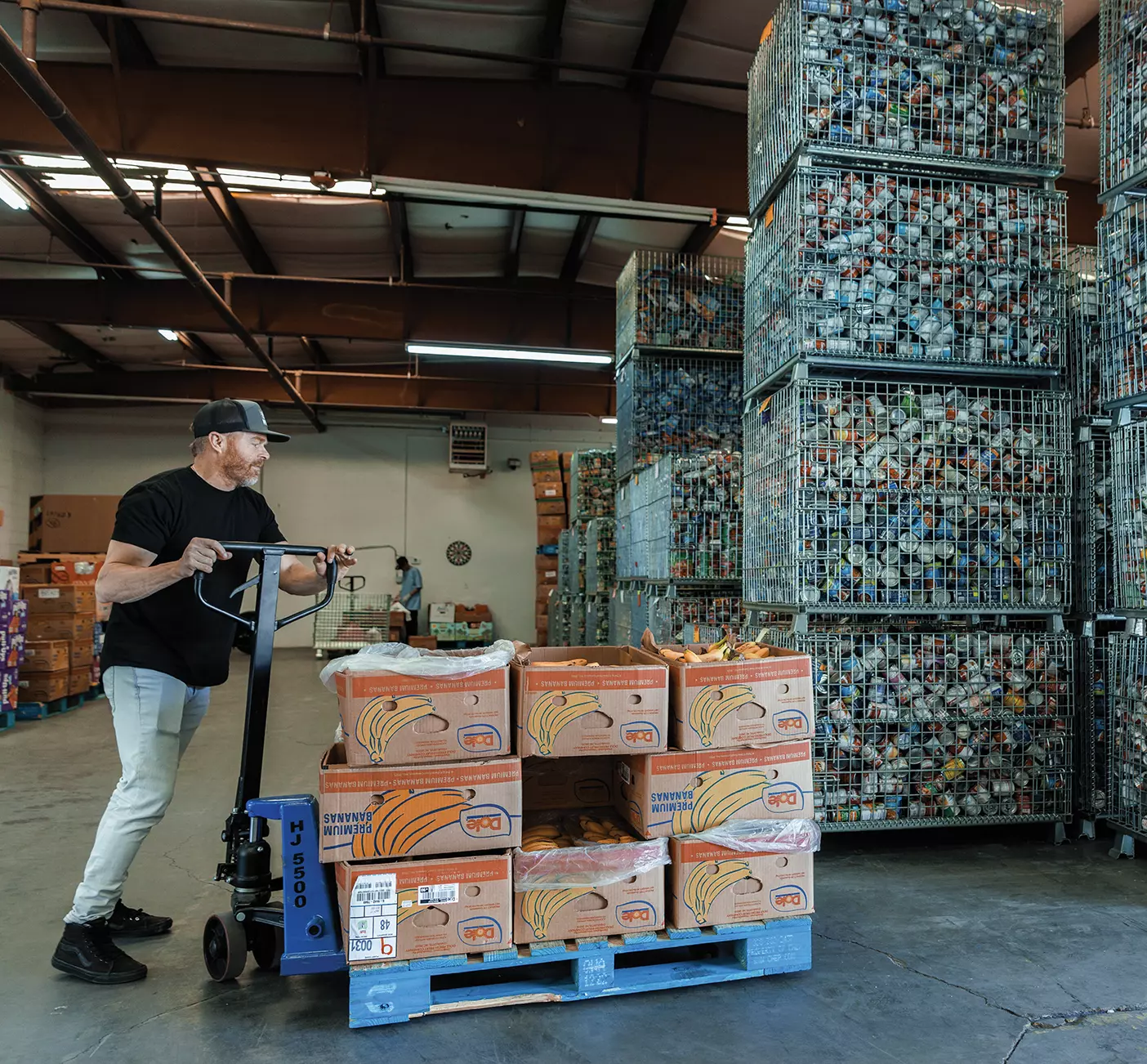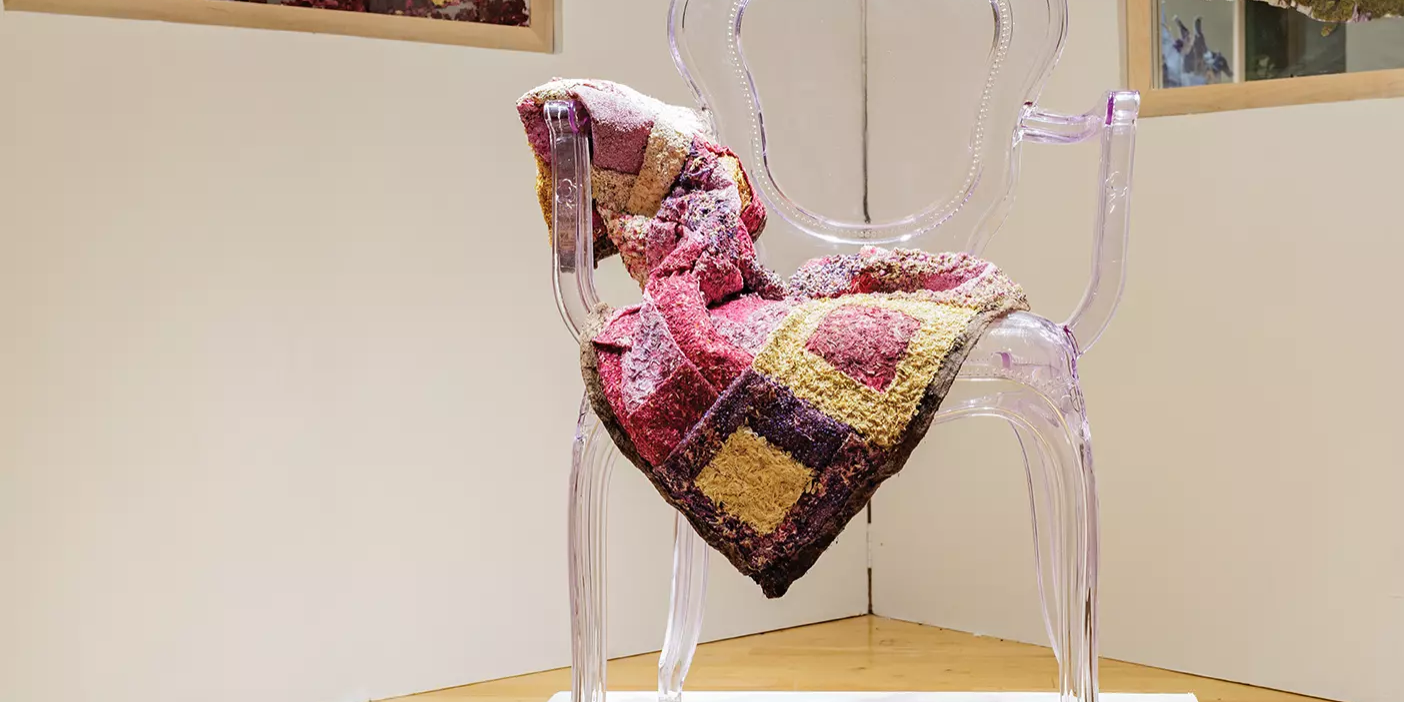Business partners join forces to fight hunger in northern Utah County.

“Times were very scary,” says Alvin W. Switzler (BA ’71), reflecting on his childhood. “Thank heavens I had friends and neighbors who fed me.” Growing up Switzler often worried about where his next meal would come from, as his teenage mom didn’t always have the resources to care for him.
Years later, this experience—along with encouragement from his wife, Linda Brady Switzler (BS ’71), to make a difference in their local community—drove Switzler to cofound a food pantry with his VitalSmarts business partner Michael D. Carter (’81).
Carter, whose father had also experienced food insecurity, had once envisioned a sign that said, “Welcome to Pleasant Grove: A No-Hunger Zone.” The idea of creating a no-hunger zone caught hold of the pair, especially after discovering that the greatest unmet food needs in Utah were right in their own backyard in Utah County, where one in six children is food insecure.
In 2016 the two opened a food pantry in American Fork, joining forces with Tabitha’s Way, an existing pantry in Spanish Fork. Tabitha’s Way founder Wendy Osborne named the pantry after a figure from the Bible known for her generosity to the poor and needy. Together, the pantries serve 7,000 to 7,500 people a month—mostly the working poor. Half of the recipients are children.
Switzler notes that many who face financial struggles don’t have any support. “A lot of people have to make hard decisions: do I pay the electricity bill, fix my car, pay the medical bill, or buy food?” he says.
Carter remembers a Vietnam veteran named Robert who reached out to the pantry. Living alone with no means of transportation, Robert had been living on tomato soup made from water and fast-food ketchup packets for several days. A veterans organization later gave him rides to Tabitha’s Way every two weeks for several years. Upon meeting Carter, Robert thanked him and confided, “You saved my life.”

Carter and Switzler view conquering food insecurity as the first step to overcoming poverty. “We can educate people, but not if they’re hungry,” says Switzler. “People can do lots of things, but not if they’re hungry.”
They acknowledge the stubborn persistence of food insecurity, noting the biblical truth that the poor are always with us. “We’re not going to close,” says Switzler. “We’re not going to go on vacation, because hunger and food insecurity don’t go away or take breaks. There will always be divorce and violence and back surgery and medical bills and job loss.”
Carter and Switzler credit the modern-day Tabithas who contribute to the pantry’s success, from financial donors to women who gather day-old bakery bread each day to youth groups to the 12 local supermarkets that donate meat, produce, dairy products, baked goods, diapers, and hygiene products. “Although we started it,” Switzler says, “we just manage it.”
Carter adds: “Christlike people want to live their religion—and we provide a way for them to do that.”
SERVICE STORIES: In Going Forth Y Magazine shares stories of alumni making the world a better place by serving in their communities, congregations, and homes. Let us know when you see an alum going about doing good. Send your nominations (and any photos) to alumninews@byu.edu.












